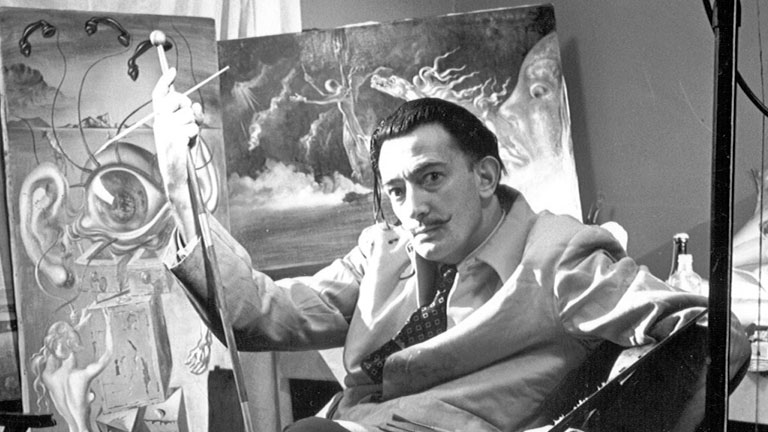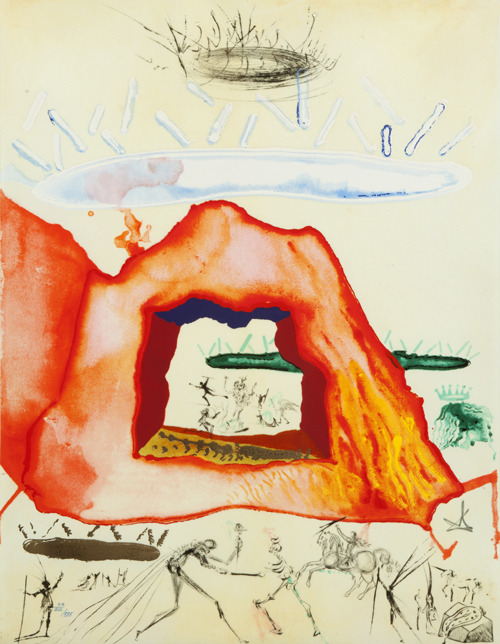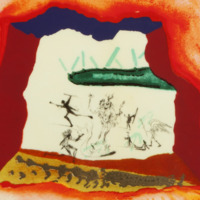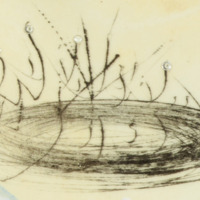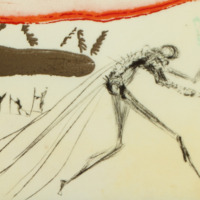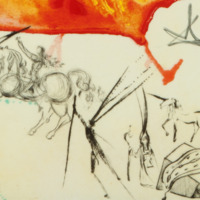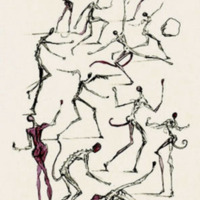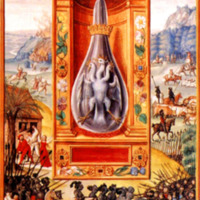The Philosopher's Crucible
In alchemy, the crucible is a melting-pot for metals involved in the purification process. It also refers to the vessel below the furnace that catches the molten metal. The most essential characteristic of the crucible is its ability to withstand great heat; it is the most important instrument in the alchemical process. Sometimes, the crucible was depicted with a small person inside, called a homunculus. This tiny person symbolizes the finished philosopher's stone-the goal of alchemy. Interpreting the large red mass in The Philosopher's Crucible as the crucible, the figures within the central window could be considered as a representation of a homunculus.
Stylistically, the form of the crucible is typical of Dalí. It is rendered as an amorphous geological formation in a space with no distinguishing landscape or background. The lack of a unifying space suggests each element of the piece exists independently, suspending them in space and time: infinity. The window in the center of the crucible is a recurrent element in Alchimie des Philosophes, and exposes several fantastical creatures, including the alchemical hermaphrodite. The traditional hermaphrodite appears as a one-bodied, two-headed being with male and female genitalia. In alchemy, the hermaphrodite is representative of a perfect being: the two opposing principles combined together after the alchemical process. The background of the print is filled with crowns, which hold some significance as symbols of the Philosopher's Stone and also the status of alchemy as "the royal art." Royalty is a significant alchemical theme. For instance, the two primary components of alchemy are called the King and Queen, and crowns were used as a symbol of the completed, perfect Philosopher's Stone. The figures frolicking in the foreground are as imaginative as the ones in the crucible's window, and include a skeleton, caped demon, unicorn, and one of Dalí's famous melting clocks.
Excerpt from the alchemical texts in Alchimie des Philosophes:
“In fact, whatever the celestial and elemental powers produce in natural vessels they bring about the same result in artificial vessels, provided that those artificial vessels are formed in a similar way to the natural ones and that which nature performs through the heat of the sun and the stars, so will art bring this about through the heat of fire...” -De Mineralibus
